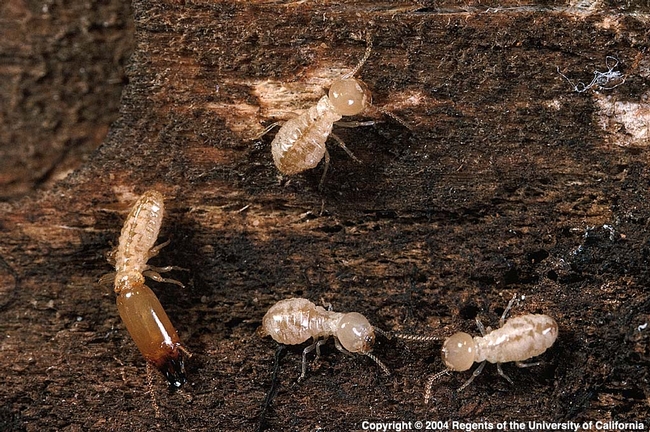Flying Ants Vs. Termites
By Andrea Peck UCCE Master Gardener
How do I tell the difference between flying ants and termites? Annie W.
Distinguishing between flying ants and termites is a bit of a challenge especially for the myopic. Small, agile, and capable of flying, both insects give meaning to the term 'flyweight.' Typically, they are found swarming around your best resting location on the one day when you had the time to prop your feet up. Figuring out exactly what type of pest you have on your hands, or more exactly, around your face and inside your right ear, is important.
At entomologist parties, flying ants are discussed with words such as ''nuisance'' or ''irritating.'' Termites, however, are on the other side of this spectrum; whole sentences are used, as in, ''have you had a termite report done?” Terms, such as, ''structurally unsound,'' or ''condemned'' may slide into the conversation. Termites are associated with significant damage.
Both insects are found near wood—particularly moist or rotten wood. Ants generally live in the soil near trees or plants that potentially carry honeydew-producing pests. Termites also live underground, but for them, the soil is just a tunnel that leads to their real objective--wood or cardboard. It is not objectionable to them to set up their household inside your household. Wood that looks bubbled, warped, or that has holes bored into it, are red flags that should alert you to the possibility of termites.
In order to discern what's flying about, you will need to catch the insect and have a look at it. Use a magnifying glass or the camera app on your cellphone to magnify the bug for better viewing. Flying ants have three body segments and a distinctly thin waist, while termites have a more blocky, solid body. The antennae of the ant are bent, or 'elbowed,' while the termite's are straight. The ant's wings are different as well; the top wings are smaller than the lower wings, while the termite's wings are all the same length and have conspicuous veins throughout.
If ants seem to be the culprit, eliminate access to entryways and keep food out of reach. If you find evidence of termites, it is best to consult with a licensed pest management professional.
